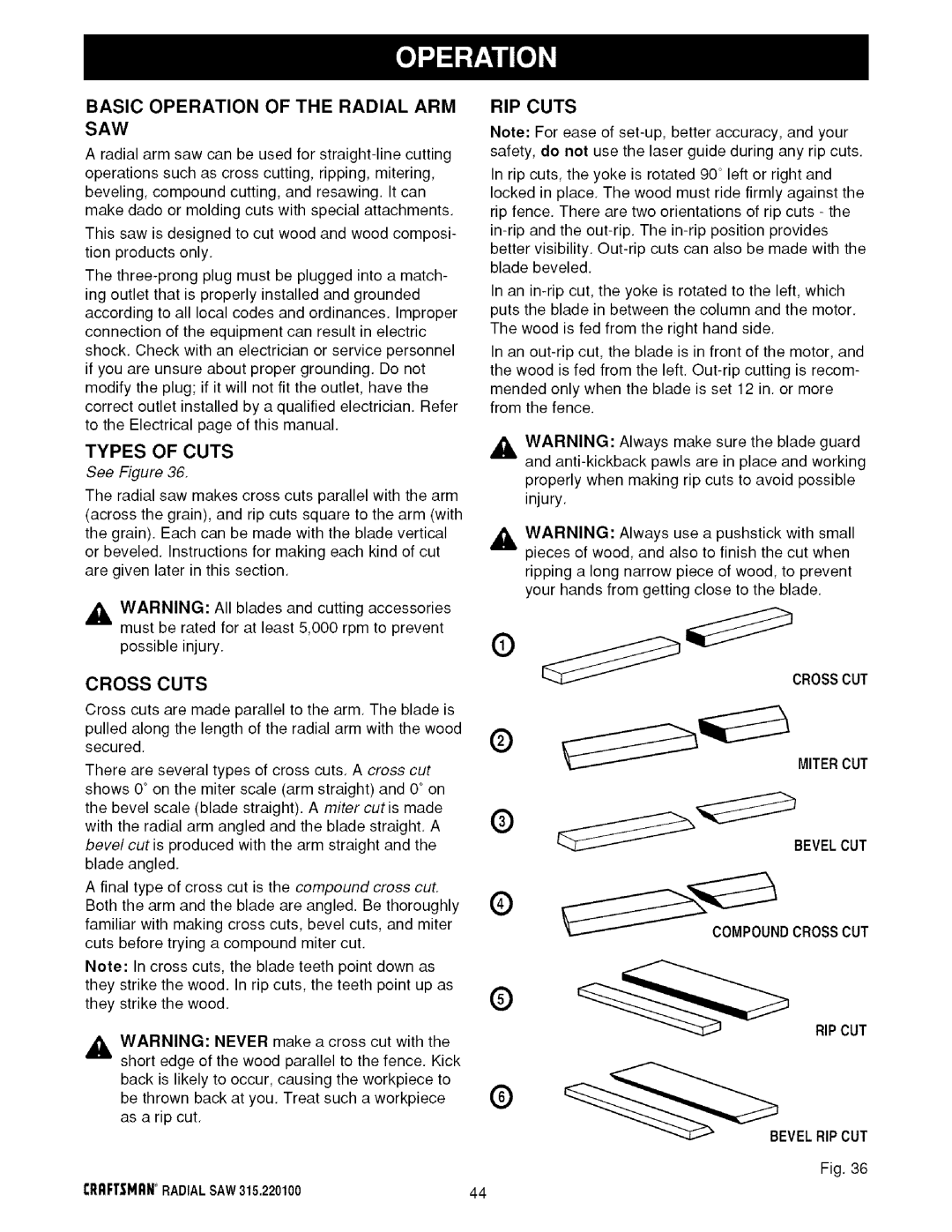
BASIC OPERATION OF THE RADIAL ARM SAW
A radial arm saw can be used for
This saw is designed to cut wood and wood composi- tion products only,
The
TYPES OF CUTS
See Figure 36,
The radial saw makes cross cuts parallel with the arm (across the grain), and rip cuts square to the arm (with the grain). Each can be made with the blade vertical or beveled, Instructions for making each kind of cut are given later in this section,
,_ WARNING: All blades and cutting accessories must be rated for at least 5,000 rpm to prevent
possible injury.
RIP CUTS
Note: For ease of
In rip cuts, the yoke is rotated 90 °left or right and locked in place, The wood must ride firmly against the rip fence, There are two orientations of rip cuts - the
better visibility,
In an
In an
mended only when the blade is set 12 in, or more from the fence.
,_, WARNING: Always make sure the blade guard and
properly when making rip cuts to avoid possible injury,
WARNING:, Always use a pushstick with small pieces of wood, and also to finish the cut when
ripping a long narrow piece of wood, to prevent your hands from getting close to the blade,
Q | _ | _CROSS | CUT |
CROSS CUTS
Cross cuts are made parallel to the arm, The blade is
pulled along the length of the radial arm with the wood secured,
There are several types of cross cuts, A cross cut shows 0° on the miter scale (arm straight) and 0° on the bevel scale (blade straight). A miter cut is made with the radial arm angled and the blade straight, A bevel cut is produced with the arm straight and the blade angled.
A final type of cross cut is the compound cross cut. Both the arm and the blade are angled. Be thoroughly familiar with making cross cuts, bevel cuts, and miter cuts before trying a compound miter cut.
Note: In cross cuts, the blade teeth point down as they strike the wood. In rip cuts, the teeth point up as they strike the wood,
,_ WARNING: NEVER make a cross cut with the
.!
short edge of the wood parallel to the fence, Kick back is likely to occur, causing the workpiece to be thrown back at you, Treat such a workpiece as a rip cut,
Q
MITERCUT
BEVELCUT
4_
COMPOUNDCROSSCUT
RIPCUT
®
__EVEL | RIPCUT |
| Fig, 36 |
CRRFTSMRNRADIALSAW 315.220100 | 44 |
